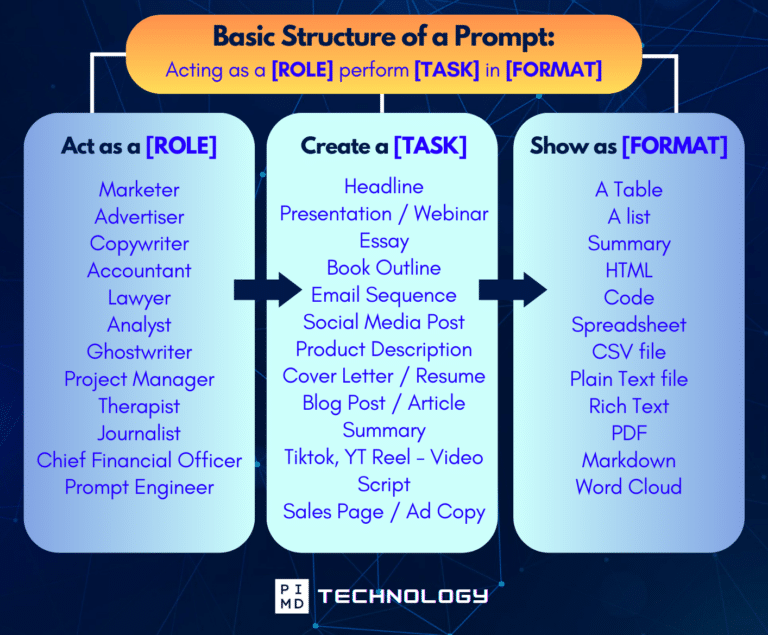Ever feel like you’re spending more time trying to make ChatGPT work than actually getting things done?
For busy doctors managing full schedules, family responsibilities, and personal to-dos, using ChatGPT incorrectly can be a frustrating time sink. It’s not just about what you ask but how you ask it. Get it wrong, and you’ll find yourself stuck in a loop of clarifications and rework. Get it right, and you can have your personal assistant from organizing your kid’s birthday party to meal planning for the week.
This guide is here to help you avoid wasting time and effort, showing you how to use ChatGPT effectively to simplify your personal life and free up your mental bandwidth. The focus here is on day-to-day stuff outside of medicine, but don’t worry, same techniques can apply in the workplace. Let’s get started!
Note: While these are general suggestions, it’s important to conduct thorough research and due diligence when selecting AI tools. We do not endorse or promote any specific AI tools mentioned here.
5 Prompting Rules When Using ChatGPT
Ever felt like it’s like you’re spinning your wheels when using ChatGPT? Ask, re-ask, tweak your input, and you end up with something that has nothing to do with what you need. There is, however, a silver lining: a well-crafted prompt can make ChatGPT your best time-saver.
A well-crafted prompt guarantees that ChatGPT understands what you want to get out of it. This results in clear, actionable results. Getting there, though, requires you to master the foundational components of a good prompt.
How do you do that? You first need to understand the basic structure of a prompt:
WANT TO GET THE COMPLETE CHATGPT CHEAT SHEET SO YOU CAN JUST COPY AND PASTE?
CLICK HERE TO SUBSCRIBE TO OUR NEWSLETTER AND WE WILL SEND IT “PROMPTLY” TO YOUR EMAIL.
Start by defining a clear role or perspective for ChatGPT. For example, you could ask it to “act as a grocery planner” or “a travel expert specializing in family vacations.” This will determine the context for relevant responses. Then provide enough context to guide ChatGPT. Instead of a vague request like, “Plan a trip,” try, “Act as a travel expert and create a 3-day itinerary for a family with kids visiting San Diego, including affordable activities and dining options.”
Clarity is key. Be specific about what you need—and don’t shy away from adding constraints like budgets or time limits. For example, ask, “Suggest three easy, high-protein breakfast recipes under 20 minutes.” The clearer your request, the more useful the output.
To help you consistently write effective prompts, here are the top five rules to follow:
- Define the Role: Start every prompt by giving ChatGPT a specific role, such as “Act as a financial advisor” or “Be a personal organizer.”
- Create the Task: Clearly describe what you want ChatGPT to do. For example, “Help create a weekly meal plan” or “Organize a list of weekend activities.”
- Specify the Format: Tell ChatGPT how to present the information. Use phrases like “Provide a table format” or “List the options step-by-step.”
- Include Context: Give enough background to ensure accurate responses, such as “Focus on healthy meals for a family of four” or “Activities for kids under 10.”
- Set Constraints: Add limits or requirements to narrow down the output, such as “Keep the suggestions under $100” or “Limit each task to 15 minutes.”
If the first response isn’t quite right, don’t worry. Iteration is part of the process. Start broad and then narrow your focus: “What are quick meal ideas?” could evolve into “Focus on 10-minute dinners with minimal ingredients for a family of four.” Breaking bigger tasks into smaller parts—like listing potential vacation destinations before planning activities—also helps streamline complex requests.
Remember, ChatGPT is a tool, and how well you wield it determines how efficient it will be. So, be patient and practice the refinement of your prompts. And isn’t just a one-time task; it’s a skill that improves with practice. The more you experiment and iterate, the better you’ll become at asking the right questions.
Over time, by simplifying your life with better prompts, you free up a lot of precious time and energy for the things that matter most.
10 Practical Prompt Examples to Save Time and Effort
Here are ten tested and practical prompt ideas designed to simplify your day-to-day life and maximize your efficiency:
- Meal Planning:
“Act as a nutritionist. Plan a week’s worth of high-protein, quick-to-cook dinners for a family of four on a $100 budget. Present your recommendations as a daily meal plan.” - Grocery Lists:
“Act as a grocery shopping assistant. Create a categorized grocery list based on a menu of three dinners: spaghetti, tacos, and stir-fry. Present the list grouped by store sections.” - Time Management:
“Act as a productivity coach. Suggest a 10-minute morning routine to boost productivity for busy professionals. Show the routine as a step-by-step checklist.” - Errands:
“Act as a time management expert. Organize a step-by-step plan to complete these errands efficiently: bank visit, grocery shopping, and picking up dry cleaning. Present the plan as a schedule with estimated times.” - Travel Planning:
“Act as a travel expert. Design a 3-day itinerary for a couple visiting New York City with an emphasis on budget-friendly activities and dining options. Present the itinerary day-by-day.” - Gift Ideas:
“Act as a thoughtful gift consultant. Suggest five thoughtful gift ideas for a colleague’s retirement under $50. Present each idea with a brief description and where to buy it.” - Event Planning:
“Act as an event planner. Help organize a child’s birthday party for 10 kids, including theme, games, and food. Present your recommendations as a detailed plan.” - Personal Finances:
“Act as a financial advisor. Create a monthly budget for a household earning $8,000 per month with expenses for rent, groceries, and savings. Show the budget in a table format.” - Home Organization:
“Act as a home organization expert. Provide tips to declutter and organize a small kitchen effectively. Present the tips as a step-by-step guide.” - Health Goals:
“Act as a dietitian. Suggest a 7-day meal plan for weight loss with a daily calorie limit of 1,500. Present the plan as a detailed daily menu.”

Subscribe to receive the 7 Steps you can follow to achieve Financial Freedom
If financial freedom is your goal, there’s no better time to get started than right now.
Unlock actionable steps that you can take every day to fine-tune your goals, discover your interests, and avoid costly mistakes on your financial freedom journey.
Conclusion
Crafting effective prompts is a skill that grows with practice. Start experimenting with these techniques and templates, and don’t be afraid to iterate. The more specific and intentional you are, the better results you’ll achieve. By mastering the art of prompting, you will unlock new levels of productivity and creativity with ChatGPT.
The key is to be consistent. So make sure that the next time you open ChatGPT, you already have your game plan set into motion.
Want a printable version of this cheat sheet? Subscribe to our newsletter for your free download and more actionable tips on maximizing AI tools. You’ll also get access to our free AI resource page, packed with AI tools and tutorials to help you have more in life outside of medicine.
As always, make it happen!
Disclaimer: The information provided here is based on available public data and may not be entirely accurate or up-to-date. It’s recommended to contact the respective companies/individuals for detailed information on features, pricing, and availability.
IF YOU WANT MORE CONTENT LIKE THIS, MAKE SURE YOU SUBSCRIBE TO OUR NEWSLETTER TO GET UPDATES ON THE LATEST TRENDS FOR AI, TECH, AND SO MUCH MORE.
Peter Kim, MD is the founder of Passive Income MD, the creator of Passive Real Estate Academy, and offers weekly education through his Monday podcast, the Passive Income MD Podcast. Join our community at the Passive Income Doc Facebook Group.
Further Reading


